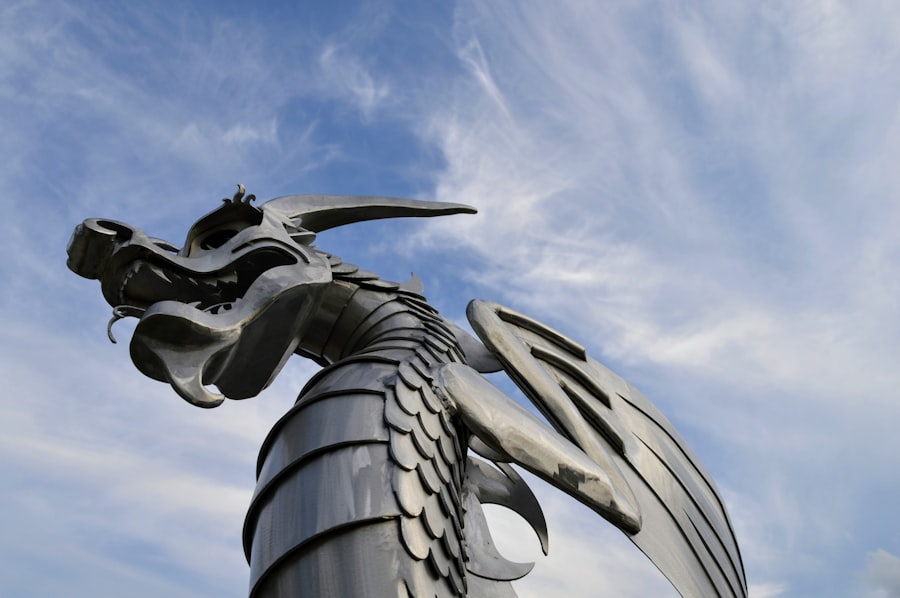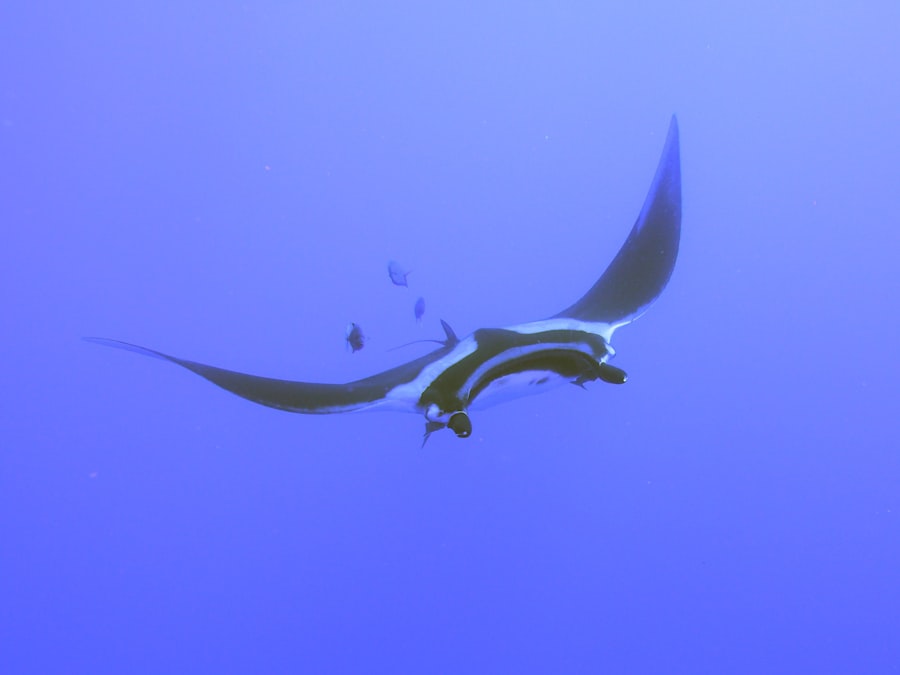The Passage du Drake, often referred to simply as the Drake Passage, has a rich and storied history that dates back to the early explorations of the Southern Hemisphere. Named after the English sea captain Sir Francis Drake, who is believed to have navigated these treacherous waters in the late 16th century, the passage has long been a critical route for explorers, traders, and researchers alike. Drake’s journey was not merely a quest for discovery; it was also a pursuit of wealth and glory during an era when European powers were vying for dominance over the seas.
His navigation through these icy waters marked a significant moment in maritime history, as it opened up new possibilities for trade and exploration in the Pacific and beyond. Over the centuries, the Drake Passage has continued to capture the imagination of adventurers and scientists. The passage became a focal point during the Age of Exploration, as numerous expeditions sought to chart its waters and understand its formidable challenges.
The 19th century saw an increase in whaling and sealing activities, which further highlighted the passage’s importance as a maritime route. As technology advanced, so too did the ability to navigate these waters, leading to a greater understanding of the region’s geography and ecology. The historical significance of the Drake Passage is not just limited to its role in exploration; it has also been a site of geopolitical interest, with nations recognizing its strategic importance in global maritime routes.
Key Takeaways
- Passage du Drake is named after Sir Francis Drake, the first Englishman to navigate the treacherous waters in 1578.
- Located between South America’s Cape Horn and the South Shetland Islands of Antarctica, Passage du Drake is a vital route for global maritime trade and scientific research expeditions.
- Navigating Passage du Drake presents challenges such as strong winds, unpredictable weather, and rough seas, making it one of the most dangerous waterways in the world.
- The weather in Passage du Drake can change rapidly, with storms and high waves posing significant risks to ships and crews.
- Passage du Drake is home to diverse wildlife, including penguins, seals, and various seabird species, making it a unique and important ecological region.
The Geographic Significance of Passage du Drake
Geographically, the Drake Passage serves as a natural barrier between South America and Antarctica, connecting the Atlantic and Pacific Oceans. This narrow stretch of water is approximately 800 kilometers wide at its narrowest point, making it one of the most significant maritime corridors in the world. The passage is not only crucial for navigation but also plays a vital role in oceanic currents and climate regulation.
The confluence of warm and cold waters in this region creates unique marine ecosystems and influences weather patterns across the Southern Hemisphere. The geographic significance of the Drake Passage extends beyond its physical dimensions. It acts as a gateway for vessels traveling to and from Antarctica, facilitating scientific research and tourism in one of the most remote regions on Earth.
The passage is often considered a rite of passage for sailors and adventurers, symbolizing both the challenges and rewards of venturing into the unknown. Its strategic location has made it a focal point for international shipping routes, underscoring its importance in global trade and commerce.
The Challenges of Navigating Passage du Drake

Navigating the Drake Passage is fraught with challenges that have tested even the most seasoned mariners. The waters are notorious for their unpredictable weather patterns, strong currents, and towering waves that can reach heights of up to 15 meters. These conditions can change rapidly, making it essential for vessels to be well-prepared and equipped for any eventuality.
The combination of rough seas and icebergs poses significant risks, requiring navigators to exercise caution and skill when traversing this formidable passage. In addition to the physical challenges posed by the environment, there are also logistical considerations that complicate navigation through the Drake Passage. The remoteness of the region means that access to support services is limited, and vessels must be self-sufficient for extended periods.
This isolation can lead to difficulties in communication and coordination with other ships or rescue services. As a result, thorough planning and preparation are crucial for any expedition attempting to navigate these treacherous waters.
The Impact of Weather on Passage du Drake
| Month | Average Temperature (°C) | Average Wind Speed (km/h) | Average Precipitation (mm) |
|---|---|---|---|
| January | 5 | 30 | 80 |
| February | 4 | 35 | 90 |
| March | 3 | 40 | 100 |
| April | 2 | 45 | 110 |
| May | 1 | 50 | 120 |
The weather in the Drake Passage is notoriously volatile, with conditions that can shift dramatically within a matter of hours. Storms can arise suddenly, bringing with them fierce winds and heavy precipitation that can severely impact visibility and navigation. The convergence of different air masses in this region creates a unique microclimate that contributes to its reputation as one of the stormiest areas on Earth.
Sailors must remain vigilant and adaptable, as understanding weather patterns is essential for safe passage. The impact of weather on navigation extends beyond immediate safety concerns; it also affects the timing and planning of expeditions. Many vessels choose to wait for favorable conditions before attempting to cross the passage, which can lead to delays in research or tourism schedules.
Additionally, adverse weather can disrupt scientific studies conducted in the region, as researchers may be unable to access specific areas or collect data during storms. As climate change continues to influence weather patterns globally, understanding these dynamics becomes increasingly important for those who navigate the Drake Passage.
The Wildlife of Passage du Drake
The waters of the Drake Passage are teeming with diverse marine life, making it a vital habitat for numerous species. The nutrient-rich currents that flow through this region support an abundance of krill, which serves as a primary food source for many marine animals. This rich ecosystem attracts various species of whales, including humpback, minke, and orca whales, which migrate through these waters in search of food.
Birdwatchers also flock to the area to observe seabirds such as albatrosses and petrels that glide gracefully over the waves. The wildlife of the Drake Passage is not only significant for ecological reasons but also plays a crucial role in scientific research. Understanding the interactions between species and their environment provides valuable insights into marine biology and conservation efforts.
Researchers often conduct studies in this region to monitor populations and assess the health of marine ecosystems. The presence of such diverse wildlife underscores the importance of protecting this unique environment from human impact and climate change.
Famous Expeditions through Passage du Drake

Throughout history, many famous expeditions have traversed the Drake Passage, each contributing to our understanding of this remote region. One notable expedition was led by Ernest Shackleton in 1914 when he attempted to cross Antarctica via the Weddell Sea but became trapped in pack ice. His journey through the Drake Passage was marked by incredible challenges and resilience, ultimately becoming a legendary tale of survival against all odds.
Shackleton’s story continues to inspire adventurers and researchers alike, highlighting both the allure and dangers of navigating these waters. Another significant expedition was conducted by Robert Falcon Scott during his ill-fated journey to reach the South Pole in 1911. Scott’s team faced numerous hardships while crossing the Drake Passage, battling harsh weather conditions that tested their endurance.
Although they ultimately did not achieve their goal, their journey provided valuable data about Antarctic geography and climate. These expeditions serve as reminders of human determination in the face of adversity and have paved the way for future exploration and scientific inquiry in this challenging environment.
Modern Navigation Techniques for Passage du Drake
In recent years, advancements in technology have revolutionized navigation through the Drake Passage. Modern vessels are equipped with sophisticated navigation systems that utilize GPS technology, radar, and sonar to enhance safety and efficiency during crossings. These tools allow mariners to monitor weather conditions in real-time, track ocean currents, and identify potential hazards such as icebergs or shallow waters.
As a result, navigating these treacherous waters has become more manageable than ever before. Additionally, satellite communication has improved connectivity for vessels operating in remote regions like the Drake Passage. This technology enables ships to stay in contact with support services or other vessels, enhancing safety protocols during crossings.
Furthermore, data collected from previous expeditions is now more accessible than ever, allowing navigators to make informed decisions based on historical trends and current conditions. These modern techniques have transformed how sailors approach navigation through this challenging passage while ensuring greater safety for those who dare to traverse its waters.
The Importance of Passage du Drake for Scientific Research
The Drake Passage is not only a critical maritime route but also an essential site for scientific research focused on understanding climate change and its impacts on marine ecosystems. Researchers from around the world flock to this region to study ocean currents, temperature variations, and their effects on global climate patterns. The unique geographical features of the passage provide an ideal laboratory for examining how changes in temperature and salinity influence marine life.
Moreover, ongoing research efforts aim to monitor biodiversity within this ecosystem as well as assess human impacts on wildlife populations. Studies conducted in the Drake Passage contribute valuable data that informs conservation strategies aimed at protecting vulnerable species from overfishing or habitat degradation. As climate change continues to pose significant threats to marine environments globally, understanding these dynamics becomes increasingly vital for ensuring sustainable practices moving forward.
Safety Precautions for Passage du Drake
Given its reputation for unpredictable weather conditions and challenging navigation, safety precautions are paramount when traversing the Drake Passage. Mariners are advised to conduct thorough pre-voyage preparations that include detailed route planning based on current weather forecasts and sea conditions. It is essential for vessels to be equipped with life-saving equipment such as life rafts, emergency beacons, and first aid kits to ensure crew safety during emergencies.
Additionally, maintaining open lines of communication with other vessels operating in or near the passage is crucial for sharing information about changing conditions or potential hazards encountered along the way. Crew training plays an equally important role; ensuring that all personnel are familiar with emergency protocols can make a significant difference during critical situations at sea. By prioritizing safety measures before embarking on their journey through these treacherous waters, mariners can mitigate risks associated with navigating one of nature’s most formidable passages.
The Future of Passage du Drake and Climate Change
As climate change continues to reshape our planet’s ecosystems, its effects on regions like the Drake Passage cannot be overlooked. Rising ocean temperatures are altering marine habitats while melting ice caps threaten biodiversity within this fragile environment. Scientists are increasingly concerned about how these changes will impact wildlife populations that rely on stable conditions for survival—particularly species such as krill that form the foundation of many food webs.
Furthermore, shifts in ocean currents resulting from climate change may affect navigation patterns through this passage over time—potentially leading to new challenges for mariners attempting to cross these waters safely. Understanding these dynamics will be critical not only for preserving marine life but also for ensuring safe passage for future generations seeking adventure or scientific discovery within this remarkable region.
The Beauty and Majesty of Passage du Drake
Despite its challenges, there is an undeniable beauty that characterizes the Drake Passage—a stark contrast between rugged landscapes and vast expanses of ocean that captivates all who venture into its depths.
The majesty of this passage lies not only in its breathtaking scenery but also in its rich history—a testament to human exploration amidst nature’s raw power.
For those fortunate enough to experience it firsthand—whether through adventure tourism or scientific research—the Drake Passage offers an unparalleled opportunity to connect with one of Earth’s last frontiers while reminding us all of our responsibility towards preserving such extraordinary environments for future generations.
The Passage du Drake Ponant is a fascinating maritime route that has intrigued explorers and adventurers for centuries. For those interested in delving deeper into the mysteries and challenges of this treacherous passage, a related article can be found on MyGeoQuest. This article provides insights into the geographical and historical significance of the Drake Passage, offering readers a comprehensive understanding of its impact on global navigation. To explore this further, you can visit the article by clicking on this link.
WATCH NOW! Drake Passage: Earth’s Deadliest Waters Revealed
FAQs
What is the Passage du Drake Ponant?
The Passage du Drake Ponant is a maritime route located between Cape Horn in South America and the South Shetland Islands of Antarctica. It is known for its rough seas and challenging sailing conditions.
Why is the Passage du Drake Ponant significant?
The Passage du Drake Ponant is significant because it is one of the main routes for ships traveling between South America and Antarctica. It is also known for its rich marine life and stunning natural scenery.
What are the sailing conditions like in the Passage du Drake Ponant?
The Passage du Drake Ponant is known for its rough seas and strong winds, making it a challenging route for sailors. The area is also prone to storms and rough weather, adding to the difficulty of navigating through the passage.
What wildlife can be found in the Passage du Drake Ponant?
The Passage du Drake Ponant is home to a diverse range of marine wildlife, including whales, seals, and various species of seabirds. It is a popular destination for wildlife enthusiasts and nature lovers.
How long does it take to cross the Passage du Drake Ponant?
The time it takes to cross the Passage du Drake Ponant can vary depending on the weather and sailing conditions. On average, it can take anywhere from 2 to 4 days to navigate through the passage.
